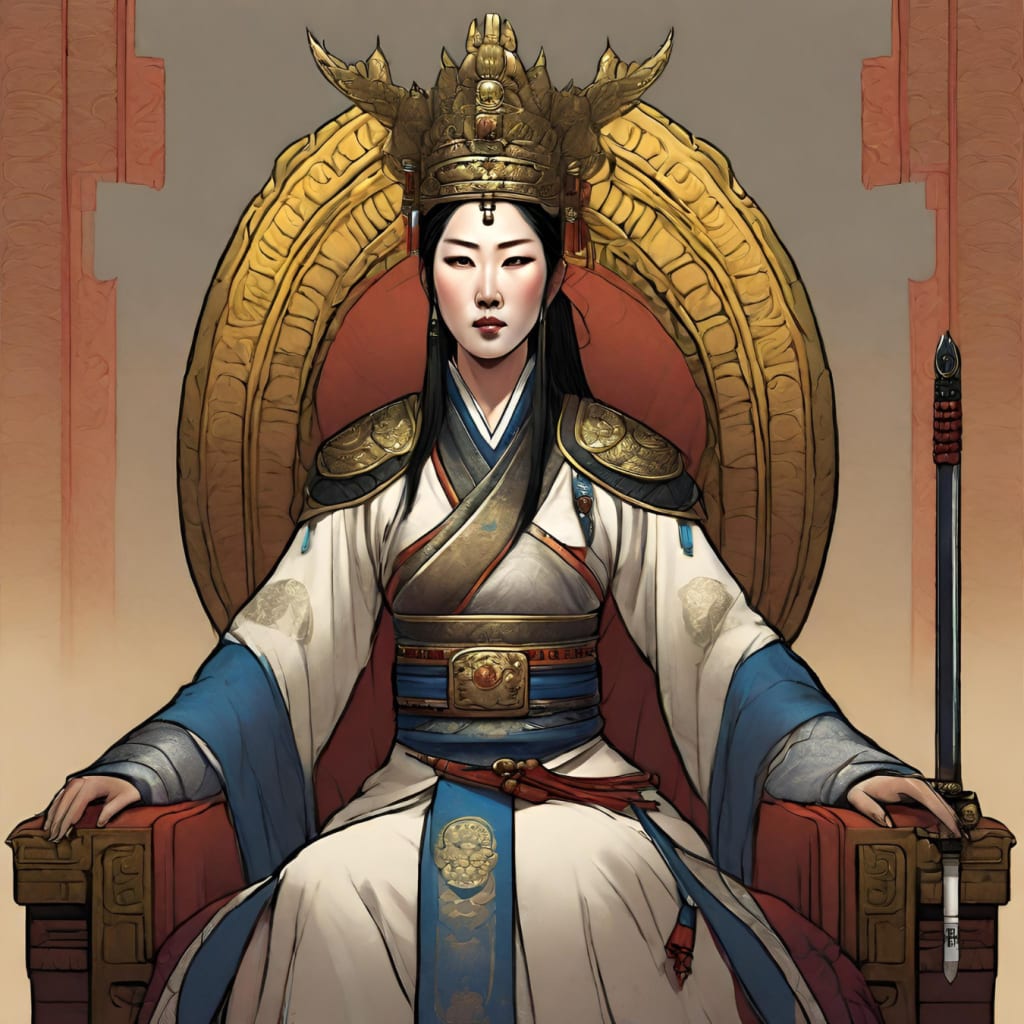Queen Seondeok of Silla: A Remarkable Ruler of Ancient Korea
She is renowned for her wisdom, leadership, and for being the first reigning queen of the Korean kingdom of Silla

Queen Seondeok, or Queen Seon-deok (606–647 CE), was a prominent and celebrated ruler in the history of ancient Korea. She is renowned for her wisdom, leadership, and for being the first reigning queen of the Korean kingdom of Silla. Her reign marked a significant period of progress and cultural development in the Silla dynasty, which lasted from 57 BCE to 935 CE.
Early Life and Rise to Power
Born as Princess Deokman, she was the daughter of King Jinpyeong, the 26th king of Silla. From a young age, Princess Deokman displayed extraordinary intelligence and a deep sense of justice. Her father recognized her abilities and, disregarding traditional gender norms, declared her as his heir.
Upon her father's death, she ascended to the throne as Queen Seondeok in 632 CE. Her rule marked a turning point in the history of Silla, and she was one of the few female monarchs in Korean history.
Achievements and Contributions
Queen Seondeok's reign was marked by several remarkable achievements and contributions:
-Buddhism and Cultural Promotion: Queen Seondeok was a strong patron of Buddhism and contributed to the spread of the religion in the Silla kingdom. She supported the construction of several Buddhist temples and promoted cultural exchange with other countries through Buddhist teachings.
-Educational Reforms: She established educational institutions, including the famous Hwarangdo, a military academy for the elite. These reforms played a crucial role in the development of Silla's culture and society.Educational and Cultural Centers:
-Alliance and Diplomacy: Queen Seondeok maintained peaceful relations with neighboring kingdoms, including Baekje and Goguryeo. She formed alliances through marriage, which brought stability to the region.
-Legacy and Admiration: Queen Seondeok is celebrated for her leadership and wisdom. Her legacy endures in Korean history and culture, and her story has been told through literature, film, and television dramas.
Architecture and art in the time of Queen Seondeok
Kingdom of Sila is known for its distinctive pagodas, characterized by their graceful, multi-tiered design. These pagodas served as religious monuments and were built to house Buddhist relics and scriptures. Examples include the Dabotap Pagoda and the Seokgatap Pagoda in Gyeongju, which are UNESCO World Heritage Sites.
While Buddhist architecture was prominent, royal palaces also witnessed architectural developments. The royal palace of the Silla kingdom, known as Geumseong, was a center of political and cultural activity. While not as well-preserved as Buddhist temples, the palace complex featured a mix of wooden and stone structures, reflecting the architectural techniques of the time.
In the time of Queen Seondeok art was closely linked to Buddhism and often served religious purposes. Notable artistic features includes intricately carved stone and wooden Buddha statues that displayed a blend of indigenous Korean artistic traditions and influences from other Buddhist regions, such as India and China. Murals in Buddhist temples were adorned with vibrant colors and depicted scenes from Buddhist scriptures and the lives of Bodhisattvas. These murals were important for teaching and conveying Buddhist principles. It is worth mentioning that skilled metalworkers of the Silla kingdom crafted exquisite gold and bronze artifacts, including jewelry, crowns, and ritual objects. The golden crown discovered in the tomb of Queen Seondeok is a celebrated example of Silla's metalworking prowess.
Challenges and Succession
While Queen Seondeok's reign was marked by many successes, it was not without challenges. She faced threats from rival kingdoms, internal political disputes, and challenges to her authority. She died in 647 CE, leaving a legacy that would continue to shape the future of Silla.
After her death, her cousin, King Muyeol, ascended the throne. Her successor continued many of the policies she had initiated, and Silla thrived as a united kingdom under the reign of her descendants.
Queen Seondeok in Modern Culture
Queen Seondeok's life and reign have been the subject of numerous books, dramas, and films in South Korea. Her story continues to be a source of inspiration and pride, as she broke gender barriers and ruled with wisdom and benevolence, leaving an indelible mark on the history of ancient Korea.
About the Creator
Noata Anavi
Reading is my way of time traveling! 🕰️ My heart is firmly anchored in ancient history, when I am not at the museum you'll find me cozied up with my beloved books 📚 each a doorway to another world. Join me on a journey through the ages!






Comments (1)
Love it! ♥️